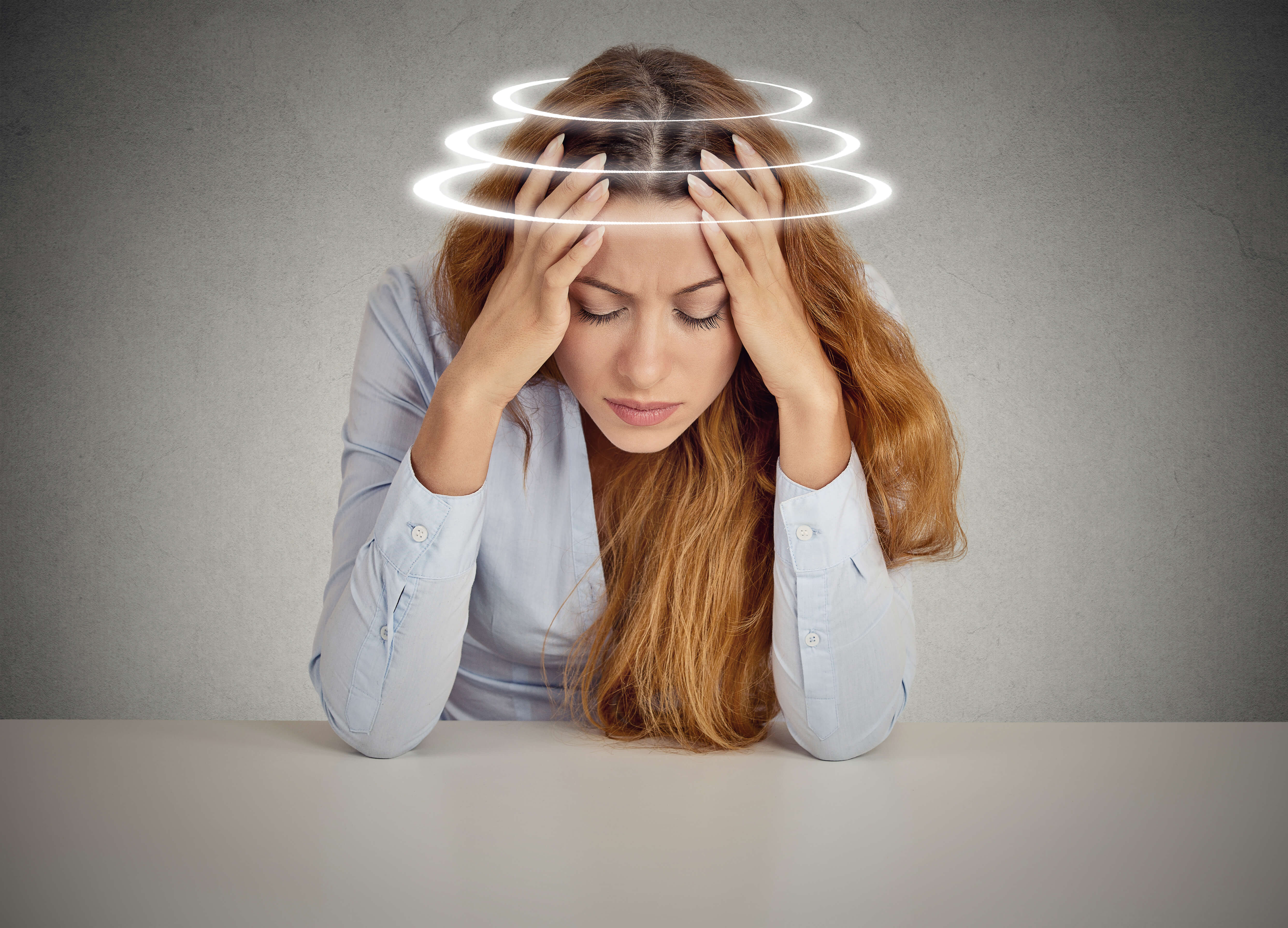
Close to half of migraine patients in the United States also experience vestibular syndrome at some point, which causes balance issues and dizziness. Many report that they only experience vertigo but no pain. It’s the second most common cause of vertigo in adults.
A vestibular migraine is a type of migraine that affects the inner ear. It causes vertigo, that funny feeling that you’re falling, moving, or spinning even though you’re sitting still. Vertigo can be spontaneous with nothing to trigger it. It can also be triggered by the same things that trigger other types of migraines.
Diagnosing migraines is already a challenge. Determining whether someone is experiencing a vestibular migraine often requires patience and sometimes visits to different specialists. Like migraines in general, there is no cure. However, research has pointed the way to some treatments that can reduce the intensity of the problem.
Let’s take a closer look at vestibular migraines, what they are, and how to treat them.
A Vestibular Migraine May Not Include Head Pain
Vestibular migraines result in episodes of vertigo but not necessarily a headache, although some people suffer both. The term vestibular pertains to the inner ear and bodily balance. Vestibular migraines can arise anytime, but some are triggered by foods, looking at specific patterns, or by moving your head a certain way.
Some patients report experiencing a symptom called the “Alice in Wonderland” syndrome, where items appear larger or smaller than they actually are.
Vestibular migraines seem to be caused by overlapping issues with human pain modulation and vestibular inputs to the brain. Vascular events may add to the problem, as can the alteration of neural activity associated with the migraine itself.
You may be suffering from vestibular migraines if you have had at least five episodes of moderate to severe symptoms lasting from five minutes to 72 hours. At least half of the episodes must include headaches with particular characteristics, sensitivity to light or sound, or a visual aura.
The headache must have at least two of the following:
- A unilateral location (one side of the head)
- A pulsating quality (throbbing)
- Moderate to severe intensity
- Aggravation by physical activity
People who suffer migraines may find themselves developing vestibular syndrome and, eventually, some migraineurs may find they only suffer dizziness. The head pain is gone from their attacks.
Vestibular Migraines Are the Second Most Common Cause of Vertigo in Adults
Vertigo from vestibular involvement can occur anytime before, after, or during an attack. As mentioned previously, head pain is not always present. If head pain is not part of the attack, you and your physician may be able to identify vestibular migraines by looking for other symptoms beyond vertigo and head pain, such as:
- Sound sensitivity
- Light sensitivity
- Hearing symptoms like ringing in the ears, pressure, or a feeling of fullness
- Other migraine symptoms like aura
Some patients have symptoms not typically attributed to migraine, but may be present all the same, like:
- Fatigue
- Brain fog
- Dry mouth
- Sweating
- Difficulty finding words
- Diarrhea
- Tingling
- Scalp tenderness
- Excessive yawning
- Blurry vision
Occasionally, a sufferer might feel neck pain and associated muscle spasms in the upper back - a condition known as cervicalgia.
Who Suffers from Vestibular Migraines?
Vestibular migraines affect up to 3% of the adult population and impact up to five times more women than men. Most who develop or are diagnosed with vestibular migraine have a personal history of migraines or motion sickness and a family history of migraine or vertigo.
The typical vestibular migraine patient is a woman in her late 30s or 40s with a history of migraine and motion sickness. The migraines may improve with age, but the vestibular symptoms often increase.
Vestibular migraines can make driving, working, and traveling difficult, if not impossible.
Diagnosing Vestibular Migraine
There is no optimal protocol for diagnosing vestibular migraines. As with all migraine diagnoses, the healthcare provider begins with a thorough history, including all symptoms and a report of the degree to which the problem disrupts daily function. The patient might fill out a questionnaire that includes:
- Jacobsen Dizziness Inventory
- Dynamic Gait Index
- Times Up and Go Test
- Activities-Specific Balance Confidence Scale
Other tests include a combination of computerized audiological and vestibular-related function tests, including positional testing with video-oculography. The doctor might run additional tests, including oculomotor and vestibulo-ocular reflex (VOR) assessments with gaze stability or dynamic visual acuity testing.
All this to say, the doctor checks out how your eyes behave when you are moving, watching, and performing other activities. Other tests include checking out your inner ear and testing your brainstem response.
Treatment
Alas, there is no cure for vestibular migraines. However, with the assistance of an experienced specialist, you can learn to manage the triggers.
The best method is a combination of medications, lifestyle modifications, and something called vestibular rehabilitation. Many of the same medications used for other types of migraines may be effective with vestibular migraines, but in general, anything that reduces the pain doesn’t do anything about the dizziness or vice versa.
Medications include:
- Magnesium
- Coenzyme Q10
- B12
- Tricyclic antidepressants
- Serotonin or serotonin/norepinephrine reuptake inhibitors (SSRIs or SNRIs)
- Triptans
- Topiramate
Lifestyle changes are based on what you learn from your headache diary. You identify your triggers and then find ways to avoid them. You might discover that your migraines are a reaction to weather changes, stress, hormones, or lack of sleep. You can't do anything about the weather, but you can prepare yourself by listening to the forecast.
Vestibular rehabilitation is a way of training your brain to interpret visual or audio cues differently and build up a tolerance to movement. For example, balance and gait training tasks and exercises help your brain become accustomed to specific movements, so you don't get dizzy, or at least not as dizzy.
Other rehabilitation methods include:
- Eye-tracking
- Incremental isolation of visual fields
- Visual retraining exercises
- Vestibulo-visual interaction exercises
In each case, the intensity of the exercise is gradually increased to the patient’s tolerance but kept low enough to keep from causing a migraine event.
Finding Help for Vestibular Migraines
Vestibular migraines include vertigo or dizziness, but not always head pain. Other symptoms may accompany the dizziness, and vertigo might be spontaneous or caused by an environmental trigger.
Diagnosis is challenging but not impossible. Once you have a diagnosis, there are effective treatments to reduce your migraines' intensity, severity, and frequency.
If you believe you may be suffering from vestibular migraines, contact the Migraine Relief Center. We can help diagnose and treat your problems to have a better quality of life.



